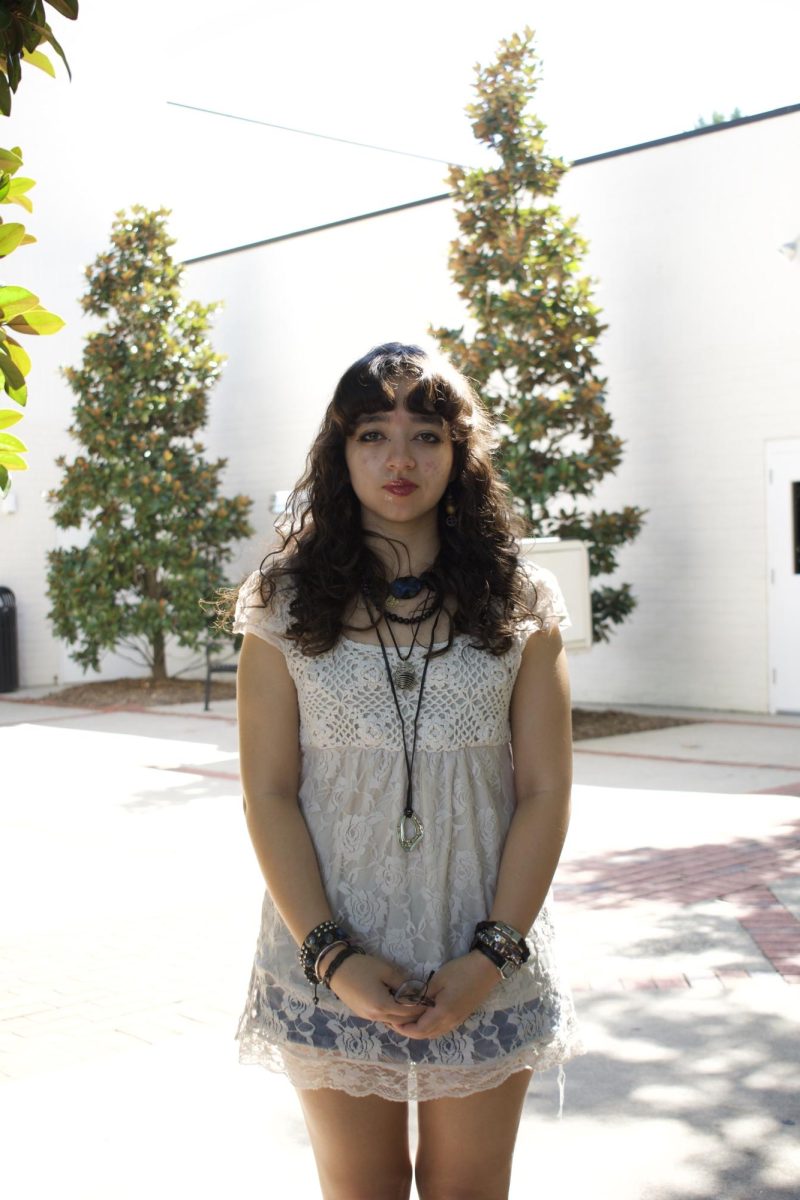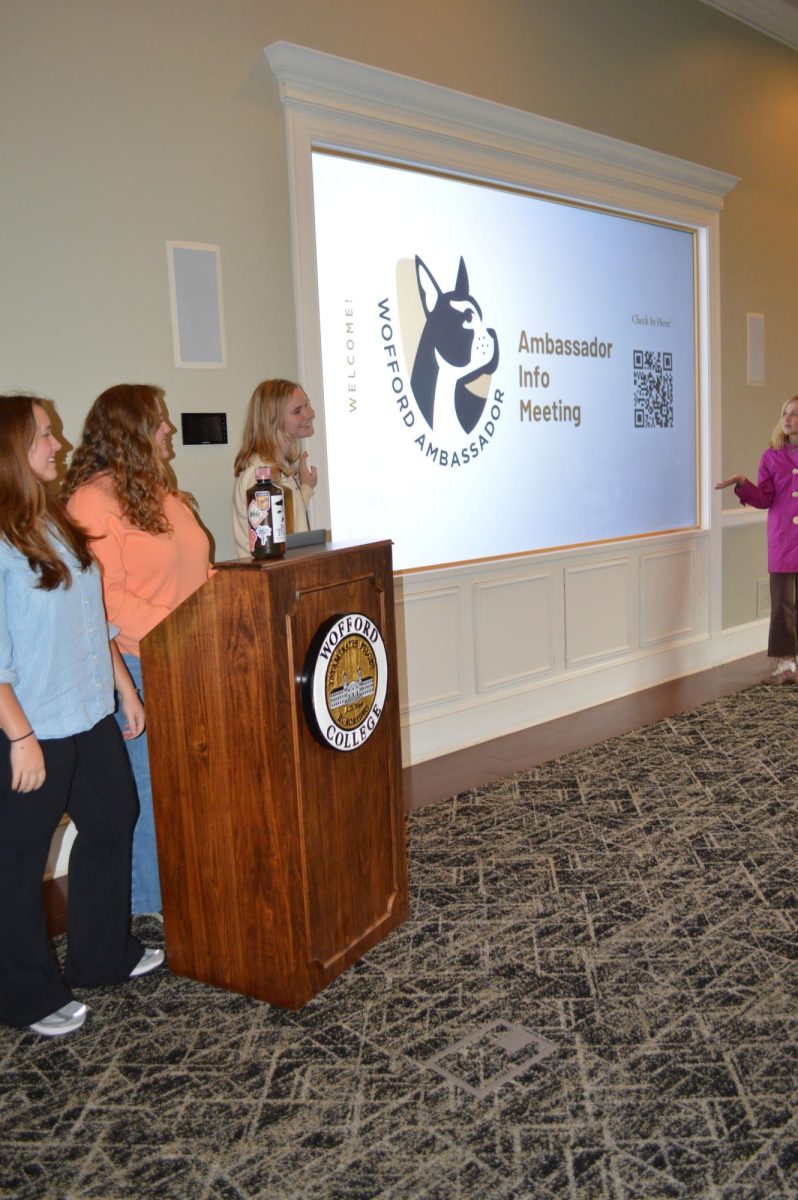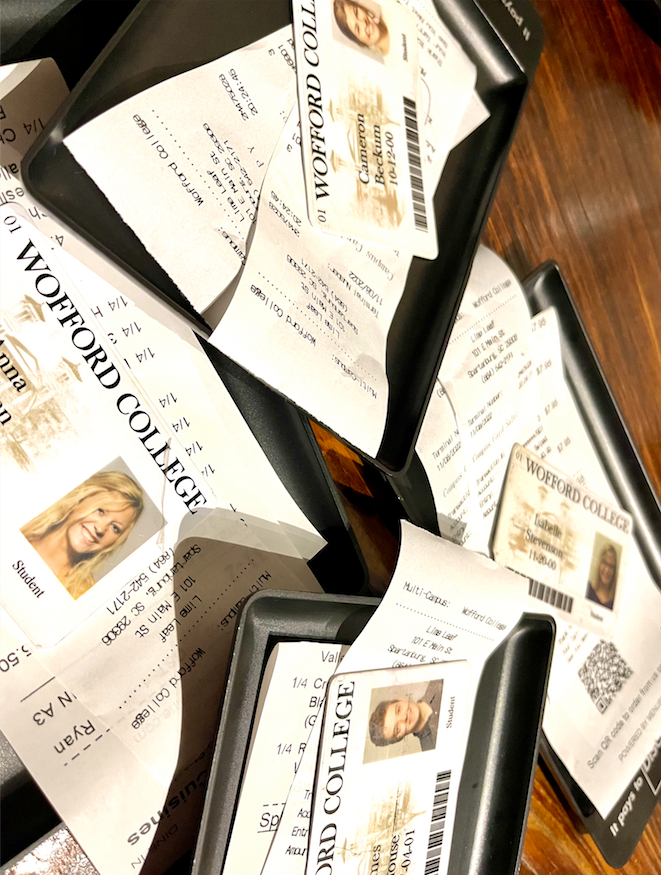A fortnight, for those only familiar with the video game, is a period of two weeks. Though you’ve probably run into only a handful of instances in your life where you needed to schedule something in exactly two weeks, our Old Gold & Black staff always knows when the next two-week period is up.
Every two weeks, a new issue of the newspaper is distributed to most buildings on campus, as well as uploaded to our website, woffordogb.com, with a few exceptions due to holidays.
On Sept. 6, Wofford held its annual interest fair, and many first-years, as well as curious upperclassmen, met three of our staff members: Managing Editor Madeline Brewer ’23 and Staff Writers Cameron Carsten ’24 and Katie Kirk ’25.
Many people, students and faculty alike, had questions for us about how the paper is produced, what our job tasks include and how to join our staff.
We are always open to reviewing work from contributing writers, anonymous or not, and we hold meetings at noon each Tuesday in the Dupre Hall Publication Room; it’s the big, central room with OG&B posters on the windows.
Students interested in contributing regularly to the paper may sit in on these meetings and speak with the editors to learn more about the process and establish communication.
As for hiring for paid positions (yes, paid!), we usually hold two hiring periods: one in the winter and one in the spring.
We advertise that the applications are open in multiple ways, especially by posting graphics on our Instagram, @oldgandb. These are typically done via Google Forms, with interviews for editorial positions.
Now, for a walk through our publication process.
The process begins on a Tuesday, where our writers discuss “soft pitches.” These are discussed at a meeting, where staff members informally pitch topics that could be written about.
Soft pitch meetings often take on the form of talking about events and other important things happening around campus and in the Spartanburg area. All topics take on a “Wofford angle,” or a way that they connect back to Wofford’s students, faculty or staff.
When forming these pitches, we go by the rule, “punch up, not down.” Particularly with controversial topics, we typically avoid targeting individual students or faculty.
On the Thursday after, we formally submit our “hard pitches.” Each writer fills out a Google Doc template establishing what they are writing about, who they will interview and what they want a photo of.
By that Sunday, writers also submit requests to our photographers for photos. They tell the photographer what their topic is and provide a few ideas for photos to pair with their article. Photographers then take the requested photos to upload to our Google Drive folder.
The following Tuesday, writers submit a progress report, giving a brief rundown of how their article is coming along. By this time, they should have at least reached out to their interviewees and done basic research on their topic. Ideally, they’re ready, or almost ready, to write their article.
The word minimum for articles is set right now at approximately 600 words but can vary depending on the number of writers contributing to the issue. Each staff writer is required to contribute one article per issue, and senior writers must contribute two.
Unpaid writers do not have to contribute, but we love to hear their thoughts.
On the Thursday after, the articles are due to the Google Drive folder by midnight. Over the next week, the editors edit each article and discuss with writers any changes that need to be made.
Once the articles have been reviewed by at least one managing editor and the editor-in-chief, the suggested edits are finalized and the articles are sent to the layout and design editor, who designs the layout of the physical paper, organizing space for articles, photographs and advertisements.
The finished paper is then sent to the printer, and the stacks of copies are delivered to the Publication Room the next Tuesday morning, exactly two weeks after the soft pitches were made.
Our staff members each take a fraction of the stacks to distribute to assigned locations around campus, including most academic buildings, dorms, Burwell Dining Hall and Mungo Student Center.
In addition, copies of the paper are delivered to Little River Coffee Bar, Pharmacy Coffee and Spill the Beans for Spartanburg residents to read or Wofford students to enjoy during their coffee runs.
Around the same time, each article from the issue is uploaded to our website, where they can be viewed, commented on and even shared on social media.
On that same Tuesday of distribution, we meet to soft pitch for the next issue and the whole process cycles.
During the entire process, staff can look through our Google Drive folder for information and other materials to help answer their questions about interviewing, picking a topic and writing in AP style, as well as flip through our books on AP style and journalism in the Publication Room.
Of course, if any staff member runs into snags they can’t fix or answer by themselves, they are always welcome to contact the editors for help and advice. At OG&B, we emphasize the importance of communication and community within the staff.




























